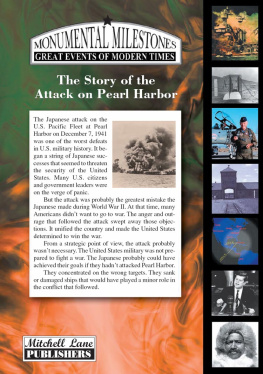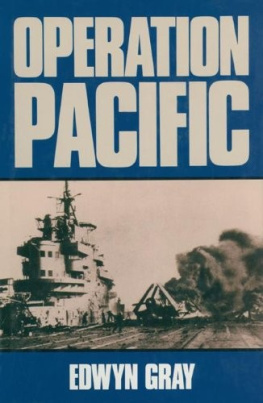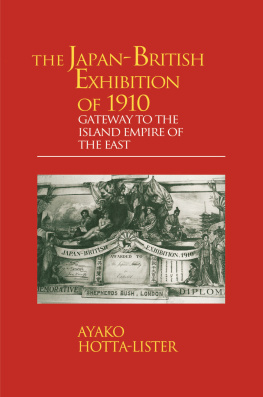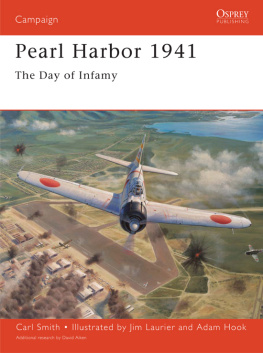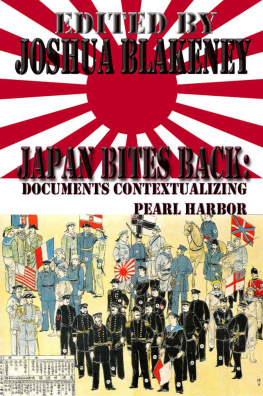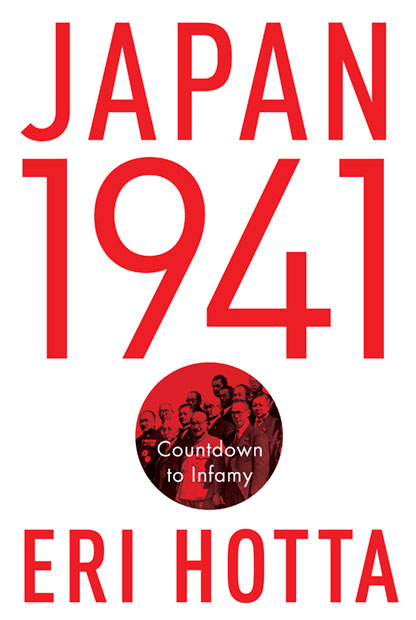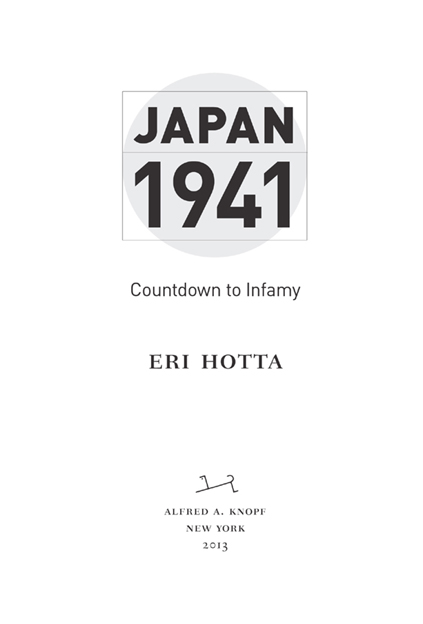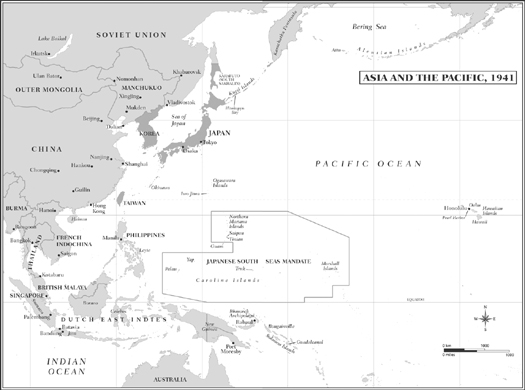THIS IS A BORZOI BOOK
PUBLISHED BY ALFRED A. KNOPF
Copyright 2013 by Eri Hotta
All rights reserved. Published in the United States by Alfred A. Knopf, a division of Random House LLC, New York, and in Canada by Random House of Canada Limited, Toronto, Penguin Random House Companies.
www.aaknopf.com
Knopf, Borzoi Books, and the colophon are registered trademarks of Random House LLC.
All photographs in the insert are from the archives of Mainichi Shimbun, with the exception of , courtesy of the Franklin D. Roosevelt Presidential Library and Museum.
eBook ISBN: 978-0-385-35051-8
Library of Congress Cataloging-in-Publication Data
Hotta, Eri, [date]
Japan 1941 : countdown to infamy / Eri Hotta.First Edition.
p. cm.
Includes bibliographical references and index.
ISBN 978-0-307-59401-3 (hardcover)
1. World War, 19391945Japan. 2. Military planningJapanHistory20th century. 3. JapanMilitary policyHistory20th century. 4. JapanPolitics and government19261945. 5. WarDecision making. 6. Pearl Harbor (Hawaii), Attack on, 1941. I. Title.
D767.2.H67 2013
940.540952DC23
2013014781
Map by Mapping Specialists
Cover image: Prime Minister Hideki Tojo (front center) poses with cabinet ministers, October 18, 1941,
Tokyo, Japan Kingendai/AFLO/Nippon News/Corbis
Cover design by Jason Booher
v3.1
To JLH
There is a tide in the affairs of men,
Which, taken at the flood, leads on to fortune;
Omitted, all the voyage of their life
Is bound in shallows and in miseries.
On such a full sea are we now afloat;
And we must take the current when it serves,
Or lose our ventures.
SHAKESPEARE , Julius Caesar
Contents
A Note on Names, Translations, and Sources
All the Japanese sources cited in this book were published in Tokyo.
I have translated all Japanese sources unless otherwise indicated in the notes.
I have preserved the traditional spelling of Konoye for Konoe in contemporaneous quotations. In all other cases, Japanese names and words are Romanized in the simplified Hepburn system, without macrons to indicate long vowels.
Throughout this book, I have respected the convention of placing the family name first for Japanese men and women (e.g., Tojo Hideki rather than Hideki Tojo). That convention is reversed only when I cite English-language sources and in the acknowledgments.
Chinese names are expressed according to the standard pinyin Romanization system, but with some exceptions. For well known historical Chinese names, including Sun Yat-sen (Sun Zhongshan), Chiang Kai-shek (Jiang Jieshi), and Manchukuo (Manzhouguo), I have preserved the convention of English-language literature of the time.
Click for large image
Major Characters
HIGASHIKUNI NARUHIKO Imperial prince; army general known for his liberal views; uncle by marriage of Emperor Hirohito
HIROHITO Showa emperor; ruled Japan from 1926 to 1989
KAYA OKINORI Finance minister from October 1941
KIDO KOICHI Marquis; lord keeper of the privy seal since June 1940; Hirohitos closest adviser
KONOE FUMIMARO Prince; prime minister from June 1937 to January 1939 and from July 1940 to October 1941 who led Japan during most of its period of intensifying international crisis
KURUSU SABURO Ambassador to Berlin at the time of the Konoe governments signing of the Tripartite Pact
MATSUOKA YOSUKE Konoes foreign minister from July 1940 to July 1941; spearheaded Japans pro-Axis diplomacy, which culminated in the signing of the Tripartite Pact in September 1940
NAGANO OSAMI Admiral; chief of the Navy General Staff from April 1941
NOMURA KICHISABURO Admiral; appointed ambassador to the United States in January 1941
OIKAWA KOSHIRO Admiral; Konoes navy minister from September 1940
SAIONJI KINKAZU Foreign policy aide to Prime Minister Konoe; grandson of Prince Saionji Kinmochi
SAIONJI KINMOCHI Prince; the last surviving founding father of modern Japan and one of its most powerful statesmen; once regarded Konoe as his protg
SHIMADA SHIGETARO Admiral; navy minister who succeeded Oikawa in October 1941
SUGIYAMA HAJIME General; chief of the Army General Staff from 1940; army minister in Konoes first cabinet (193739), which exacerbated Japans war with China
SUZUKI TEIICHI General director of the Cabinet Planning Board; retired army officer trusted by both Konoe and Tojo who often acted as a liaison between the two
TAKAMATSU NOBUHITO Imperial prince; member of the Navy General Staff in 1941; younger brother of Emperor Hirohito
TOGO SHIGENORI Ambassador to Berlin and Moscow in the late 1930s; became foreign minister in October 1941
TOJO HIDEKI General; army minister in the Konoe cabinet from January 1939 to October 1941; became prime minister after Konoe resigned
TOYODA TEIJIRO Admiral; Konoes foreign minister from July 1941; vice minister of the navy at the time of the signing of the Tripartite Pact
Selected Events in Japanese History Prior to April 1941
Here and throughout the book, the dates are indicated in local times.
1853 July Commodore Matthew Perry presses Japan to end its isolationist policy.
1854 March 31 The Tokugawa shogunate signs the unfavorable Treaty of Peace and Amity with the United States, ending its isolationist policy and leading to the opening of Japanese ports to the rest of the world.
1868 January 3 The shogunate falls and the Meiji Restoration is proclaimed.
1882 January 4 The Imperial Rescript to Soldiers and Sailors, a code of military conduct that will form a vital part of Japanese nationalism, is issued.
1889 February 11 The Meiji Constitution is promulgated.
1890 July 1 Japan holds its first general elections.
November 25 The first session of the Diet, Japans bicameral parliament, is summoned, and held four days later.
1894 August 1 Japan declares war on Qing China, beginning the Sino-Japanese War.
1895 April 17 Japan defeats China, concluding the war with the signing of the Treaty of Shimonoseki, placing Taiwan and the Liaodong Peninsula, strategically located to access northeastern China (Manchuria), under Japanese control.
April 23 Russia, Germany, and France pressure Japan to return the Liaodong Peninsula to China (the so-called Triple Intervention), which it does on May 5.
1898 March 27 Russia secures a leasehold on the Liaodong Peninsula.
1902 January 30 The Anglo-Japanese Alliance, a treaty between equals, is formed.
1904 February 8 Japan attacks czarist Russia at Port Arthur, declaring war two days later.


